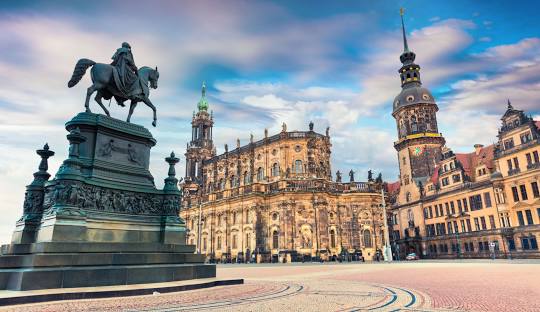Dresden, Germany
🏰 Dresden, Germany: A Baroque Beauty on the Elbe River
Nestled on the banks of the Elbe River, Dresden is a city of stunning contrasts—a blend of historic grandeur, artistic innovation, and modern vibrancy. Known for its Baroque architecture, world-class museums, and scenic riverside views, Dresden offers a rich cultural experience that’s both timeless and contemporary.
🏛️ A Walk Through History: Dresden’s Architectural Masterpieces
Dresden is often referred to as the "Florence of the Elbe" for its architectural beauty, and with good reason.
-
The Zwinger Palace is an 18th-century masterpiece of Baroque design, home to the world-renowned Old Masters Picture Gallery.
-
The Frauenkirche, a symbol of reconciliation after WWII, is an awe-inspiring church with a magnificent dome that dominates the skyline.
-
Stroll through the Fürstenzug (Procession of Princes), a grand mural depicting the rulers of Saxony.
Whether exploring palaces, churches, or murals, Dresden’s history is carved in stone.
🎨 Art & Culture: A Treasure Trove for Art Lovers
Dresden has long been a hub for artists and scholars, and its cultural scene continues to thrive.
-
The Semper Opera House offers world-class performances in a Baroque setting, with works ranging from Bach to Wagner.
-
The Green Vault at the Dresden Castle is home to one of the largest collections of treasure and decorative arts in Europe.
-
The Albertinum houses both classical sculptures and modern works, bridging the gap between past and present.
Art and history are intimately intertwined in Dresden, offering a cultural journey for all senses.
🌳 The Green Heart of Dresden: Parks and River Views
Dresden’s green spaces offer respite from the city’s hustle and bustle, especially along the scenic Elbe River.
-
The Großer Garten is a sprawling park perfect for leisurely walks, boat rides, or a visit to the Dresden Zoo.
-
The Brühl’s Terrace offers stunning views of the river and the historic city center, often called the "Balcony of Europe."
-
Loschwitz Bridge, also known as the Blue Wonder, is an iconic suspension bridge with sweeping views of the Elbe.
Dresden is an oasis of green in the heart of urban life, offering both peaceful retreats and panoramic vistas.
🛍️ Shopping & Culinary Delights: Dresden’s Unique Offerings
Dresden is a paradise for shoppers and foodies alike.
-
Altmarkt is the city’s central square, lined with historic buildings and traditional markets where you can pick up local crafts.
-
For a more modern experience, head to the Prager Strasse, home to malls and boutique shops.
-
Don’t miss trying Sachsenschmaus, a regional dish made with pork, dumplings, and cabbage, at a traditional tavern.
-
Pair your meal with a Dresdner Eierschecke, a local dessert made with cream, egg, and cake layers.
The culinary scene in Dresden is as rich and layered as its history.
🏨 Where to Stay in Dresden
-
Luxury: Hotel Taschenbergpalais Kempinski—elegance and comfort in a historic palace.
-
Mid-range: Gewandhaus Dresden—stylish and close to cultural landmarks.
-
Budget: A&O Dresden Hauptbahnhof—a modern, affordable option near the train station.
Many accommodations offer views of the Elbe River or are located within walking distance of historic sites.
🏙️ Top Attractions You Can't Miss
-
Zwinger Palace: A Baroque gem housing museums and the Royal Cabinet of Mathematical and Physical Instruments.
-
Frauenkirche: A symbol of Dresden’s resilience and a stunning example of Baroque architecture.
-
Dresden Castle: One of Europe’s oldest castles, home to the Green Vault and Dresden State Art Collections.
-
Semper Opera House: Experience a world-class opera or ballet in this architectural marvel.
These iconic landmarks make Dresden’s historical and cultural narrative come alive.
📅 When to Visit Dresden
-
Spring (Mar–May): The city comes alive with festivals, outdoor concerts, and pleasant weather.
-
Summer (Jun–Aug): Ideal for enjoying the riverbanks and outdoor cafes, though it can be crowded.
-
Autumn (Sep–Nov): The fall colors along the Elbe and quieter attractions make this a lovely time to visit.
-
Winter (Dec–Feb): Dresden’s Christmas markets are legendary, especially the Striezelmarkt with mulled wine and handcrafted gifts.
No matter the season, Dresden offers a seasonal flair that changes the city’s vibe.


